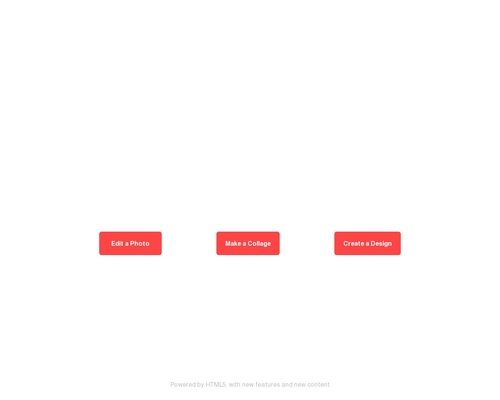
While proactive client management can mitigate most project obstacles and hurdles, and clear communication can practically eliminate client confusion and uncertainty, it’s nearly impossible to avoid all client conflict. It’s inevitable that sticky situations, disagreements, and the resulting tough conversations are going to happen at some point, so it’s best that you’re prepared to handle them with grace, objectivity, and professionalism.
Client conflict occurs when the agency and client have a disagreement due to different ways of doing things, miscommunication, varying priorities, misaligned expectations, confusion, and unexpected changes.
A new client onboarding process can sidestep quite a bit of client conflict by communicating intentions, setting clear expectations, establishing boundaries, and explaining processes, especially when following onboarding best practices. But onboarding only sets the stage for a successful project and can’t possibly remove every potential hurdle.
The good news is that client conflict isn’t always a bad thing.

Managing conflict the right way can turn a negative situation into a positive one, affirming your position as leader of the project, reinforcing your expertise, and building greater trust with your clients. Plus by addressing any potential conflict immediately you can salvage the client relationships worth saving and end those that are toxic before they devolve into a situation that could harm your brand.
Your Approach To Conflict Management
Often, the difference between a happy client and a disgruntled client is how you handle the conflict that arises during your work together. If a problem does arise with your client, you have the option to manage it in one of four ways:
- Ignore And Avoid: Ignore the issue, wait it out, and hope that it will go away or resolve itself on its own. Watch out though, this approach often causes the problem to get worse, not better.
- Accommodate The Client: Resolve the conflict by giving in to the client demands or meeting their needs even if it means you suffer a bit in the process. Be careful, however, because if not managed well, this accommodation can lead to resentment of the client, erode the quality of service delivered, and damage to the client relationship.
- Go For The Win: Pursue your own goal and work to get your way. With this approach, be ready to burn the bridge and end the client relationship.
- Work Together: Collaborate with your client to find a solution that works for both of you. Consider seeking a compromise where you meet in the middle. This approach is the most positive solution that works to make all parties involved happy and pursues a positive outcome that strengthens your client relationship.
How To Handle Client Conflict
To effectively manage client conflict, you need to handle it quickly.
I know that having tough conversations with unhappy clients is never enjoyable, but the faster you can tackle the issue, the better. The longer it takes to address the problem, the bigger the hurdle will be to find a positive solution and make the client happy. Plus, by responding and acting quickly, you’re demonstrating to your client that you care about the client and take the situation seriously.
It is also important to move all communication about the conflict away from email.
Not only does too much meaning get lost in translation when communicating by email, but the sterile form of communication leaves too much open to personal interpretation. Instead, get on a video chat or a phone call with your client so your client can see, hear, and interact with you face to face.
If you’re unsure of how to handle a conflict with your client or have the tough conversation needed when a client is unhappy, use the following step-by-step guide to a successful conflict resolution.
Step-By-Step Guide To Conflict Resolution

- Listen: Give your client time to speak their mind, share their story, and explain their frustrations uninterrupted and listen to what they have to say. Often clients that leave one agency for another do so because they didn’t feel heard.
- Acknowledge: When the client is done explaining the situation to you, take time to acknowledge their feelings. Repeat back the key concerns they have to show that you listened and understand. If you need to, ask non-judgmental questions to gather more information.
- Show Empathy: It is important to your clients that you care about their concerns and the problem at hand. They want to know that it concerns you as well. Take a moment to consider the client’s perspective, why they are upset, and how the situation affects them. Let them know that you are sorry, you care, and you’re doing everything you can to reach a positive solution.
- State The Facts: So far the conversation around the conflict has been focused on the client, their concerns, their needs, and making them feel heard, acknowledged, and understood—and you have done so without defending you or your team or arguing with the client in any way. Now you need to objectively and clearly state the facts about the situation. Communicate the who, what, where, when, why, and how and leave emotion out of it.
- Explain The Solution: With a clear understanding of the problem and the objective facts, it’s time to explain the solution to your client. In some cases, you will have a solution ready to present with them on the spot, in others you’re explaining the process of what will happen next and how you recommend a solution be reached.
- Remain Firm: It is critical that you remain firm, fair and friendly at all times and once a solution is reached, you stick to it. Don’t waiver or let the client push you around if they later decide the solution isn’t good enough. If the client is still unhappy, be prepared to take the next steps as outlined in your contract.
When You Made A Mistake
No one is perfect and you can’t guarantee that your work will be one hundred percent error free, especially when writing hundreds of thousands of lines of code. If you do happen to make a mistake on a client project or do something wrong during a client engagement, follow these three steps:

- Own The Mistake: Admit the mistake as soon as it is discovered and own it completely. Apologize right away. Don’t make excuses or assign blame because the client doesn’t care.
- Communicate The Fix: Share the solution or the fix with the client. Often, as long as you have a viable solution to present, the client won’t be as upset about the initial mistake. If you’re not sure of the solution or what will make the client happy, ask them.
- Explain The Plan: Demonstrate your professionalism and reestablish your expertise by explaining the plan of action, step-by-step to the client, so they know exactly what to expect and what comes next.
When You Have A Problem With The Client
So far we’ve only addressed conflicts where the client is unhappy or where you have made a mistake, but occasionally, the conflict will stem from you. There are going to be times when the agency has a problem with the client and the concerns are from the service provider, not the client.
In this case, you need to decide how important problem or concern is and whether or not it is worth presenting the problem to the client and creating conflict in the relationship. If the problem is serious enough to mention:
- Explain the situation and problem to the client clearly, objectively, and without emotion.
- Follow steps 1-6 above to reach a successful conflict resolution
Positive Conflict Resolution Builds Trust
As you can see, experiencing problems, hitting obstacles, and dealing with conflicts is a normal part of owning an agency and working in client services.

While you hope to minimize and avoid conflicts with proactive client management, clear communication, and effective onboarding systems, at some point conflicts will arise. The key is being prepared to manage conflicts effectively so you can reach a positive solution quickly. This way you can transform a potentially negative situation into a positive experience that shows empathy, builds trust, reinforces your professionalism, and improves your client relationship.
If you’re nervous about having tough conversations with clients, copy the step-by-step guide to conflict resolution from this article and save it for future reference.
Need More Help with Managing Tough Situations?
Check out our webinar on How to Deal with Problem Clients and get helpful tips on how to create a system that preserves your workflow, keeps clients in check, and keeps projects within scope and on time.
[ad_2]
Source link





